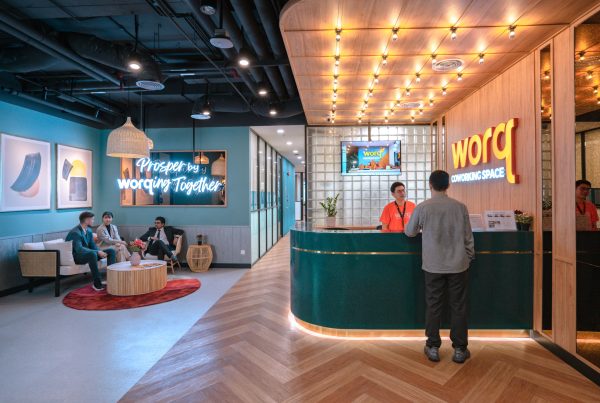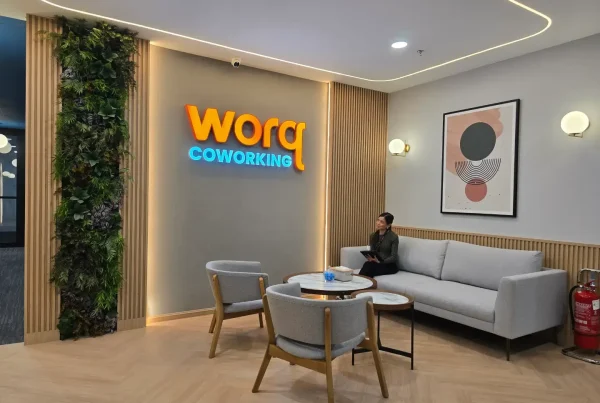Introduction
From interest rate hikes to elevated inflation rates, as highlighted by the World Economic Forum, and a somewhat sluggish trade recovery, the world has navigated through turbulent waters. Amidst this backdrop, a pressing concern has emerged in the form of a housing shortage, casting a spotlight on the living sector. This shortage, while posing challenges, also unveils a myriad of opportunities, particularly for coworking spaces. As traditional living and working models are being re-evaluated, as noted by the Harvard Business Review, the intersection of housing and workspace is becoming a focal point of discussion. This blog post delves into the implications of the housing shortage on the living sector and explores how coworking spaces are poised to offer innovative solutions in this evolving landscape.
The Global Economic Landscape in 2023

2023 stood as a pivotal year for the global economy, with a series of formidable challenges defining it. Interest rate hikes dominated these challenges, sending shockwaves across financial markets and sectors. Persistent inflation further strained economies and consumers. Trade, a traditional driver of global economic growth, struggled to recover, with various regions trying to regain their pre-pandemic momentum. These economic challenges significantly impacted occupier and investment activities. According to the JLL 2023 Global Real Estate Perspective, transaction markets shifted, heavily influenced by rising capital costs and conservative underwriting. Occupiers became more discerning, and investors proceeded with caution, adjusting their strategies to this complex economic environment.
The Rising Cost of Capital

In the living sector, the rising cost of capital significantly influenced market dynamics. As capital grew more expensive and underwriting became more conservative, transaction markets shifted. Traditional financing avenues tightened, making property acquisitions and investments more cautious. However, private capital began filling this gap, driving acquisition activity. This increase in private investment, marked by high levels of ‘dry powder’ or unallocated capital, indicated strong investor confidence but also raised concerns about potential market overvaluation and the sustainability of current market prices. As the living sector navigated these financial challenges, coworking spaces had to strategize to capitalize on opportunities and minimize risks.
Sector Dynamics: The Living Sector Takes Center Stage

In 2023’s global market tapestry, different sectors displayed varied performances, creating a diverse economic picture. The living sector took the lead, with robust transaction volumes highlighting its activity. This growth showed the sector’s importance against a global housing shortage and the rising demand for innovative living solutions. Meanwhile, the logistics sector maintained its essential role in the global supply chain, even with cooling fundamentals. In contrast, the office sector faced a dilemma. With the rise of hybrid work policies and uncertain future demand, it questioned traditional workspace models. As these dynamics played out, the living sector’s rise emphasized coworking spaces’ potential to meet housing and workspace needs.
The Office Sector: A Deeper Dive

In 2023, the office sector traversed a challenging terrain, heavily influenced by global economic conditions. Economic challenges, like rising interest rates and inflation, dimmed office leasing volumes. This trend, along with rising global vacancy rates, signaled a shift in business perceptions of office spaces and hinted at broader urban planning and real estate development implications. Moreover, experts anticipate 2023 as the peak of the global development cycle. This peak, combined with the current economic environment, could pressure the office sector further. Developers and investors now need to adjust their strategies, staying agile amidst changing demand patterns and economic challenges.
Logistics: A Brief Overview

Amid the housing shortage and its effects on various sectors, the logistics sector moderated its activity. However, strong market fundamentals persisted. Factors like the strategic positioning of logistics hubs, advancements in supply chain technology, and the ever-growing e-commerce demand stabilized this sector. Recent trends in the logistics sector also revealed patterns across regions. Some areas, for instance, experienced steady increases due to high demand and limited supply, while others remained stable, balancing demand and infrastructure availability.
The Living Sector: Opportunities for Coworking Spaces

The housing shortage, a significant concern in the 2023 economic scenario, has inadvertently paved the way for innovative solutions, particularly within the living sector. As homes become scarce and the traditional boundaries between living and working blur, there’s a burgeoning demand for flexible home-office solutions. Coworking spaces, once primarily seen as hubs for startups and freelancers, are now emerging as a viable answer to this demand. They offer a blend of professional infrastructure with the comfort of a home-like environment, catering to the needs of the modern workforce. In the current economic climate, these spaces are not just alternatives but essential assets. They provide cost-effective solutions for businesses, foster community-building, and promote sustainable urban living. With the housing crunch showing no immediate signs of abating, coworking spaces stand to gain significantly, offering adaptability in an otherwise rigid property market. However, as they rise in prominence, they also face their own set of challenges that need to be navigated wisely.
Conclusion
In the ever-evolving landscape of 2023, the housing shortage has undeniably left its mark on the living sector, prompting industries and individuals alike to rethink traditional living and working paradigms. As we’ve explored, the challenges posed by this shortage have also birthed opportunities, especially for coworking spaces. These spaces have seamlessly bridged the gap between professional needs and the comforts of home, offering flexible solutions in a tight property market. As we look ahead, the trajectory for coworking spaces in the living sector appears promising. Their adaptability, coupled with the ongoing demand for flexible work environments, positions them for significant growth. The fusion of living and working spaces might just be the innovative solution the modern world needs, making coworking spaces an integral part of our urban future.





